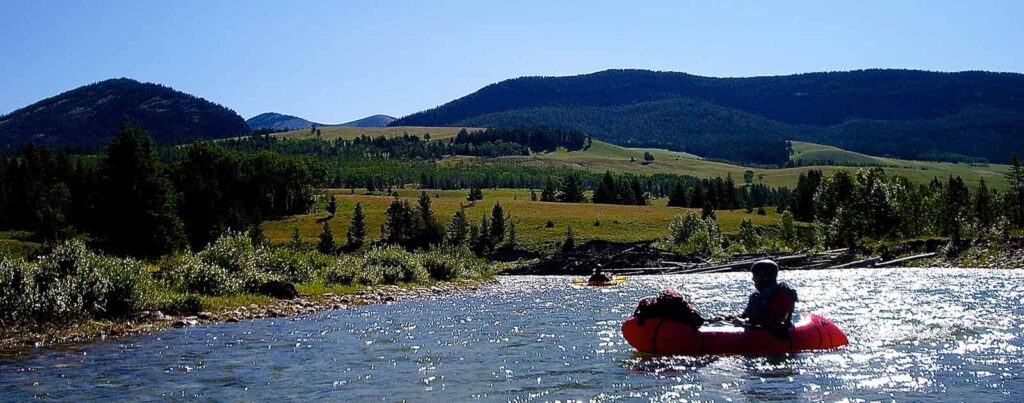
Western Montanans are lucky enough to live amongst truly wild places: valleys created by free-flowing rivers, seas of peaks reaching for the sky, and largely intact habitats that are filled with all of species that were present at the time of European contact. The Rocky Mountain Front – that dramatic geography where the mountains and rivers of the Northern Rockies meet the Great Plains – is one of those places. But until recently, it was a largely unprotected landscape.
The Front harkens back to a different era. Working ranches still dominate the landscape. Wildlife and culture regularly mix in and around the few communities spread along Highway 89/287 as it threads its way north through the prairie. Looking west, jagged, limestone “reefs” rise up from the plains. These walls of rock are incised in regular intervals by canyons containing gin clear water from last winter’s snows.
Numerous trails follow these canyons west into the interior worlds of the Bob Marshall Wilderness complex, worlds inhabited by grizzly bears, huckleberries, and elk living in mountain meadows and verdant thickets, along the sides of rushing rivers that are framed by imposing, snowcapped peaks. Those fortunate to experience the Rocky Mountain Front from either the plains or the mountains cannot help but be moved by it.
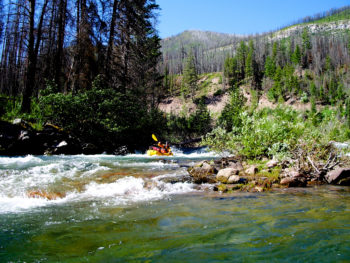
Sun River, MT
When I first moved to Montana 8 years ago and began exploring the Front I thought of it mostly as a backpacker’s paradise. Some years later however,
I bought a packraft, a single-person, 5-pound, packable whitewater raft that begs to be used for exploration. All of a sudden the streams of the Rocky Mountain Front morphed into premier paddling destinations as well.
And what glorious streams they are! Birch Creek, Deep Creek, the Dearborn River, the Forks of the Sun River, the Teton River…. gorgeous, wild, headwaters streams running through a patchwork of federal lands, many with outstanding wilderness characteristics.
For nearly a decade, a coalition of landowners and conservation groups has been working to protect this landscape, hammering out a collaborative solution called the Rocky Mountain Front Heritage Act. On December 19, 2014, President Obama signed into law the National Defense Authorization Act (NDAA), which just so happened to carry with it a number of natural resources bills that had been waiting for their day in the sun, one of those being the Rocky Mountain Front Heritage Act.
While the NDAA sparked considerable controversy in both form and substance – some disagreed with the compromises made and questioned the appropriateness of adding natural resource bills to a must-pass defense bill – the Rocky Mountain Front Heritage Act (along with the North Fork Watershed Protection Act) is a clear win.
The Rocky Mountain Front Heritage Act protected 275,272 acres along the Front, adding 67,160 acres of Wilderness to the Bob Marshall Wilderness Complex and designating another 208,112 acres as a “Conservation Management Area” that aims to protect the front as it is while allowing existing uses. The last time Congress designated a wilderness area in Montana was over 30 years ago in 1983, when it designated the Lee Metcalf Wilderness.
Please join me in celebrating the passage of the Rocky Mountain Front Heritage Act. Cheers to the people who worked together to make it happen! In this era of hyper-partisan politics it is inspiring to see concerned citizens from multiple political persuasions working together to protect a place that they love.

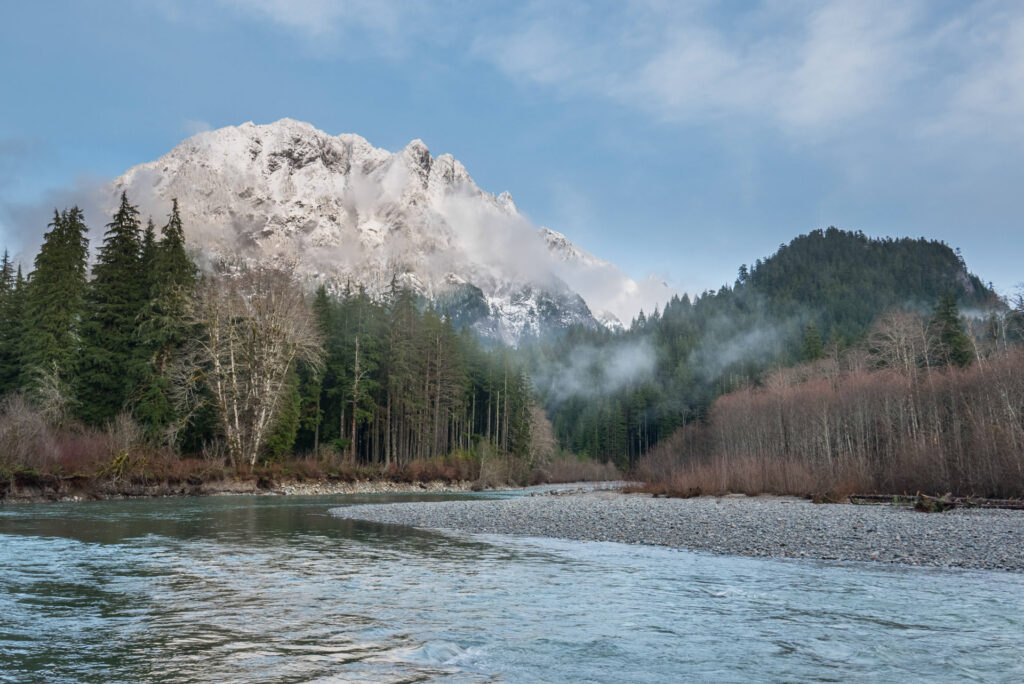
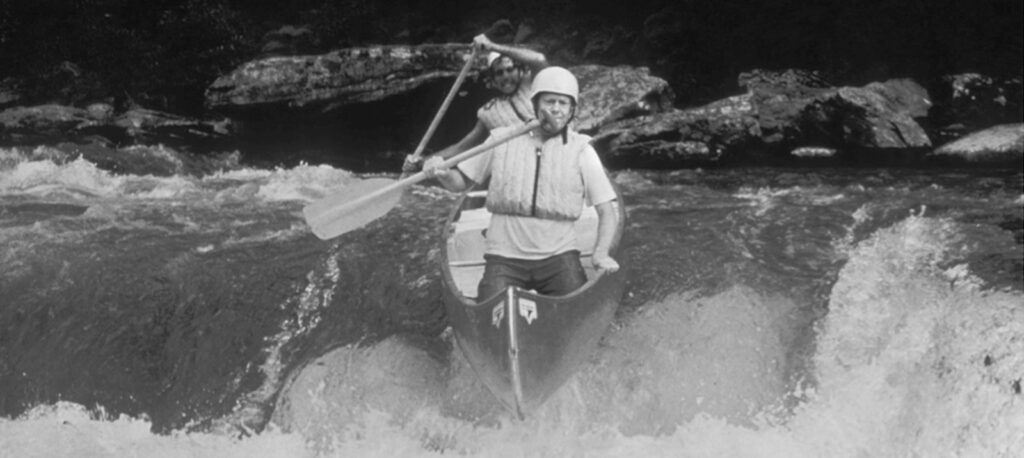
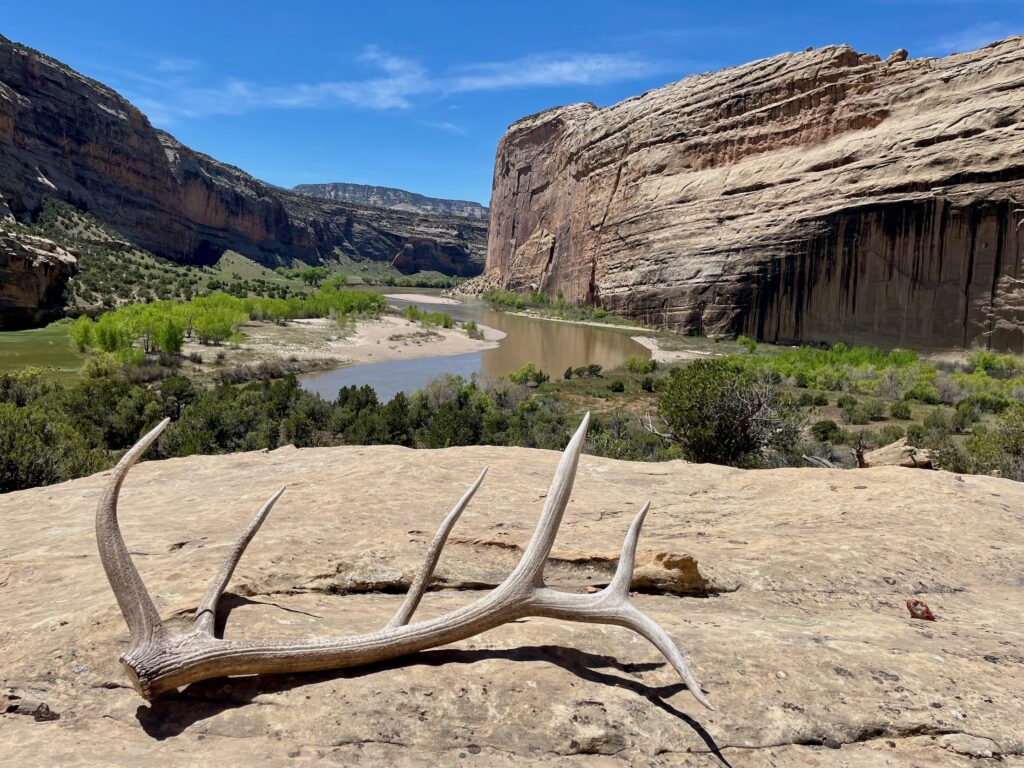
2 responses to “Celebrating Passage of the Rocky Mountain Front Heritage Act”
Greetings,
I am concerned about the access issues on the upper stretch of the Dearborn ( on the canyon road near Wilderness Bible camp). I sent this email to the agencies in involved ( FWP and Forest Service) and wondering if you have any knowledge of this as well? I also cc’d the Wilderness Society.
Thank you:
My name is Joanne Gores and I am a native-born Montanan. I am also an advocate for public lands and public land access. I was raised in Great Falls and spent many summers in the forests and wilderness areas near Augusta and also at the headwaters of the Dearborn. I attended girl scout camp in the area as a young teen. On July 27, 2023, I noted that the access to the Dearborn from Flat Creek road all the way up to the Bible Wilderness camp are tightly restricted for access due to barbed wire strung on both sides of the river. The wire looks fairly new, and it cuts off access. I heard large earth-moving equipment nearby. We accessed the river at the bridge where recent fiber optic was buried but could not see where on the river the sound was located. It sounded as if they were moving streambed/rocks or ? . As we walked along the river bank, the noise stopped.
It is my understanding that one cannot restrict access to the streams as per Montana law. Nor can one alter the stream. Who do I reach out to directly to express my issues of concern? I am willing to return to the area and document my discovery.
Thank you,
Joanne Gores
406-461-3684
From someone in Ireland who has just read the history of native american book ( bury my heart at wounded knee), feels totally disgusted at the genocide of the tribes at the hands of the military and supposedly christian people( mainly originally from uk) purely for greed, and will very likely never see these places, I take my hat off to you in your efforts to preserve the natural beauty of the once home of the indian tribes